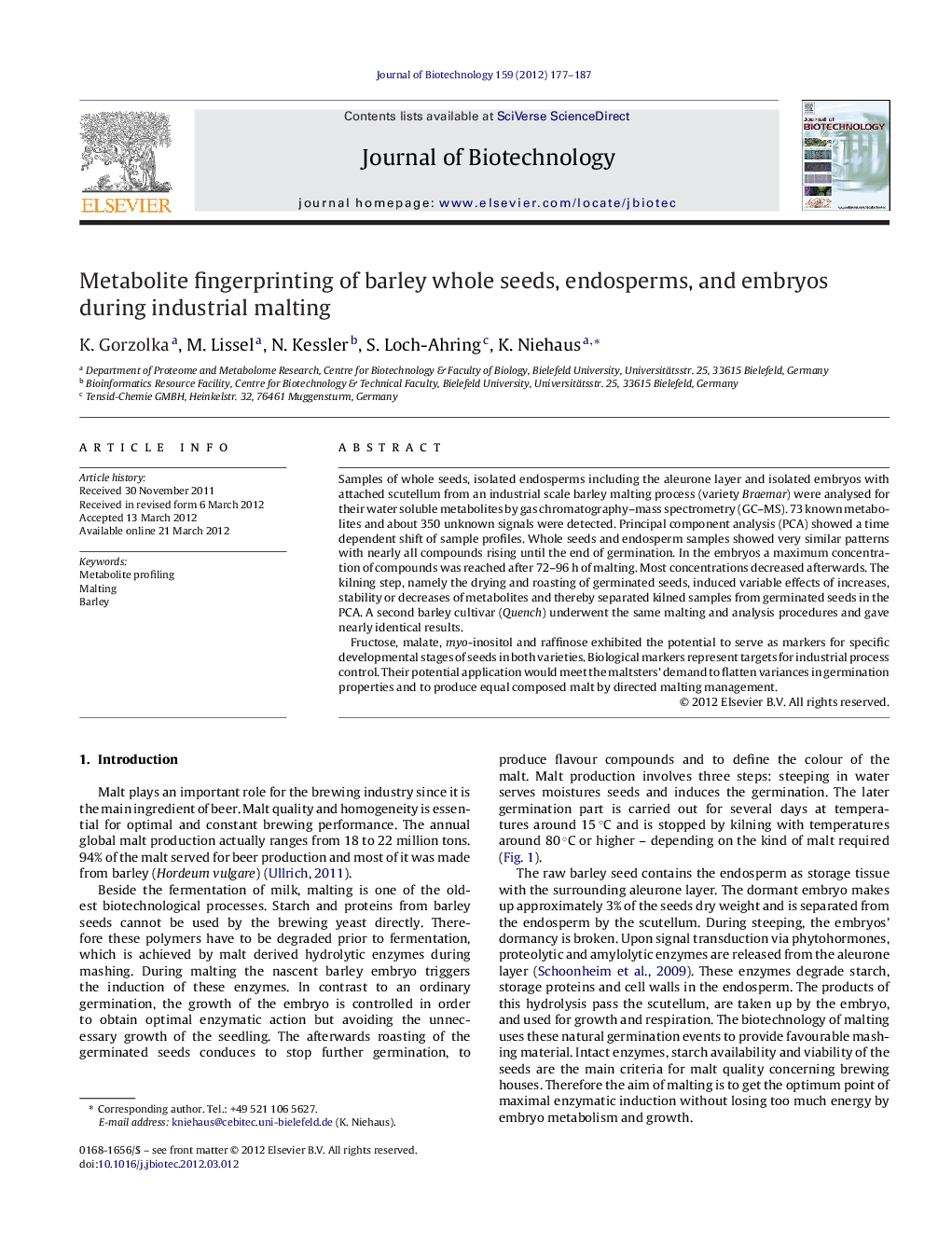| Article ID | Journal | Published Year | Pages | File Type |
|---|---|---|---|---|
| 23779 | Journal of Biotechnology | 2012 | 11 Pages |
Samples of whole seeds, isolated endosperms including the aleurone layer and isolated embryos with attached scutellum from an industrial scale barley malting process (variety Braemar) were analysed for their water soluble metabolites by gas chromatography–mass spectrometry (GC–MS). 73 known metabolites and about 350 unknown signals were detected. Principal component analysis (PCA) showed a time dependent shift of sample profiles. Whole seeds and endosperm samples showed very similar patterns with nearly all compounds rising until the end of germination. In the embryos a maximum concentration of compounds was reached after 72–96 h of malting. Most concentrations decreased afterwards. The kilning step, namely the drying and roasting of germinated seeds, induced variable effects of increases, stability or decreases of metabolites and thereby separated kilned samples from germinated seeds in the PCA. A second barley cultivar (Quench) underwent the same malting and analysis procedures and gave nearly identical results.Fructose, malate, myo-inositol and raffinose exhibited the potential to serve as markers for specific developmental stages of seeds in both varieties. Biological markers represent targets for industrial process control. Their potential application would meet the maltsters’ demand to flatten variances in germination properties and to produce equal composed malt by directed malting management.
► Metabolome profiling of barley whole seeds, endosperms and embryos during industrial malting of two barley cultivars. ► The whole seeds and seed sections underwent a gradual change in metabolite profiles during germination. ► The embryos showed different composition and different time-dependent changes of metabolite concentrations during malting than the endosperms. ► Nearly all compound abundances rose during malting, but few “markers” showed maxima at specific time points.
